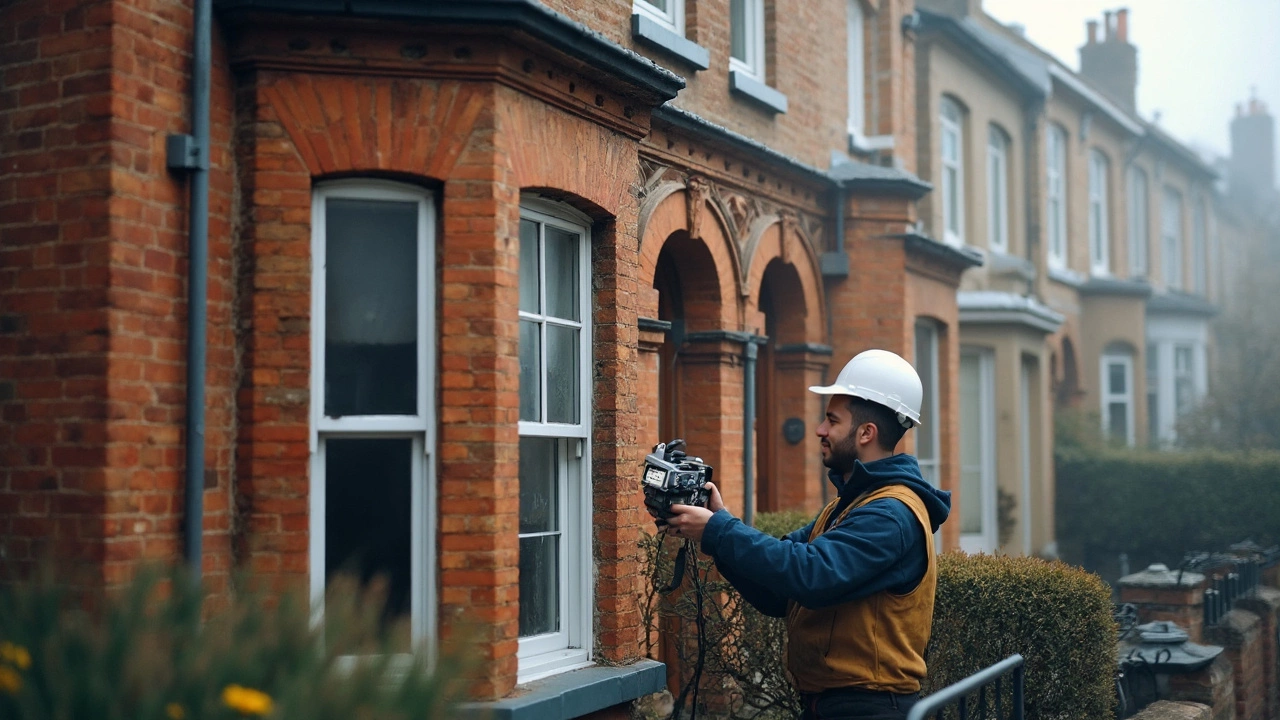Foundation issues can be the stuff of homeowner nightmares. But hey, before you build a blanket fort and hope for the best, let's talk practical solutions! First things first, keep an eye out for warning signs. Are you seeing cracks in your walls? Is a door suddenly refusing to close smoothly? These might be the early whispers of foundation troubles.
Now, why does this happen in the first place? Well, it could be several things, from soil that's having a bad mood swing due to weather changes, to water damage, or even poor construction practices. The good news is, you're not the first to face this, and there's plenty of help out there to guide you through fixing it.
- Spotting the Warning Signs
- Understanding the Causes
- DIY or Professional Help
- Preventing Future Problems
Spotting the Warning Signs
Alright, so what exactly should you be looking for to know if your house has foundation issues? It's not like the foundation is going to send you a memo! But no worries, there are some tell-tale signs to clue you in.
Cracks, Cracks, and More Cracks
One of the most common signs is cracks—be it on walls, floors, or the ceiling. Especially, look for those that run diagonally or meet at corners. These suggest that your home is settling in a not-so-great way.
Doors and Windows Acting Up
Find yourself wrestling with a door or window? If they're suddenly sticking, jamming, or refusing to latch properly, it might be more than just humidity playing tricks.
Sloping Floors
Feel like you're walking uphill, indoors? If the floor seems uneven or you drop a marble, and it rolls mysteriously to one side, your foundation might be tilting slightly.
Separating Counters and Cabinets
When counters or cabinets start pulling away from the walls, it could be a subtle hint of something more serious happening below. It's like your house’s way of waving a tiny white flag.
Check the Basement
Take a trip downstairs. Notice any obvious cracks in the foundation blocks or brick? Do they seem to leak water after a downpour? It could be water damage adding pressure.
Sometimes, these issues are more bark than bite, but you don't want to ignore them. If you need to repair those house foundation problems, spotting these signs early can save you a lot of effort and money down the line.
Understanding the Causes
So, what's really behind those foundation issues that seem to pop up out of nowhere? Let's break it down. Your home's foundation can face troubles mainly due to the ground it's built on. A major culprit is the soil. If it expands and contracts with moisture changes, that movement can stress your home’s foundation.
Water is a big player here too. Too much or too little water in the soil can mess with stability. Think of clay soil that gets soggy and then dries into a rock-hard mess, or sandy soil that doesn’t hold water well and dries out quickly. Both can cause settlement issues, leading to all those pesky cracks and shifts.
Water Drainage and Plumbing
I know what you're thinking, but it's not just what's happening under your house that's important; it’s also what's going on around it. Poor drainage systems can lead to water pooling around your foundation, while leaks in plumbing systems become sneaky saboteurs if left unchecked.
The American Society of Civil Engineers states, "Water is the most common cause of foundation problems. Keeping moisture levels consistent is key to a stable foundation."
Tree Roots and Vegetation
A lesser-known but equally tricky source of foundation problems can be the trees and plants near your house. Those impressive tree roots searching for moisture can push against foundations and cause damage. It's like they're slowly trying to squeeze your house out!
| Common Causes | Description |
|---|---|
| Expansive Soil | Soil with high clay content that swells and contracts with moisture. |
| Poor Drainage | Inadequate water diversion systems leading to water accumulation. |
| Tree Roots | Roots exerting pressure and extracting moisture from the soil. |
| Plumbing Leaks | Undetected leaks that alter soil composition and stability. |
Understanding these causes means you can take preventative steps to protect your home's foundation. And when in doubt, a professional evaluation can provide targeted insights into your specific situation.

DIY or Professional Help
So you're staring at a crack in your living room wall or noticing some uneven floors, and you're wondering: should you break out the tool belt or call in the pros? Let's weigh this out.
When to DIY
Not every crack spells disaster, and some smaller foundation issues can be tackled with a little elbow grease and the right materials. Here are a few scenarios where you might consider DIY:
- Hairline cracks: If the cracks are less than 1/4 inch wide, they might just be surface imperfections. You can usually fix these with some high-grade epoxy or polyurethane foam.
- Minor leaks: Foundation leaks that don't seem to be growing or causing significant water intrusion can often be sealed yourself. Just make sure you use a sealant that's designed for your type of foundation.
When to Call the Pros
Foundation repair can quickly become complicated, and there are times when it's best left to professionals. Consider calling in experts for:
- Major structural issues: If there are significant shifts or very wide cracks, especially those more than 1/2 inch, it's time to consult a foundation repair company. These can indicate serious structural problems.
- Water pooling and drainage issues: If you see significant water pooling around your foundation, it's essential to address it properly to prevent further damage. A professional can assess the cause and recommend solutions like improved drainage systems.
A large-scale issue might seem like a costly undertaking, but remember, ignoring major foundation issues can result in more expensive repairs down the line.
Cost Comparison
If you're curious about costs, it can vary widely. Here's a quick peek:
| Repair Type | DIY Cost | Professional Cost |
|---|---|---|
| Small Cracks | $20 - $150 | $500 - $800 |
| Major Structural Repair | N/A | $2,000 - $25,000 |
Preventing Future Problems
Nobody wants to deal with pesky foundation issues more than once, so let's chat about keeping them at bay. Prevention is all about good habits and a keen eye. The first step is managing moisture around your home. Excess water isn't your foundation's best friend, so make sure your drainage systems are up to scratch.
Maintaining Proper Drainage
Start by checking that gutters and downspouts are in good working order. Clean them regularly so they channel water away from your home effectively. You might consider extending downspouts at least six feet away from the foundation to keep water from pooling at the base of your home.
- Check for gutter clogs and clean them out regularly.
- Ensure downspouts extend at least six feet from your home.
- Inspect the ground slope; it should slope away, not toward your house.
Soil and Landscaping Considerations
The type of soil around your house plays a big role in foundation health. Clay-rich soils, for example, expand and contract with moisture levels, which can cause shiftage. It's worth having a soil engineer take a look if you're worried. Also, avoid planting trees too close to the house, as roots can interfere with the foundation.
- Keep large trees planted at least 20 feet from the home.
- Consistent watering helps stabilize soil that shrinks or swells.
- Professionally evaluate soil quality if needed.
Regular Inspections
Schedule regular check-ups of your foundation, especially if you live in an area prone to severe weather conditions. Catching small issues early can prevent bigger headaches. Look out for cracks and signs of uneven floors or walls.
It's all about nipping problems in the bud before they grow roots—quite literally sometimes. By keeping an eye on your home foundation and making sure everything's in tip-top shape, you're doing your future self a huge favor!





